-
 bitcoin
bitcoin $109523.663807 USD
-0.13% -
 ethereum
ethereum $4019.526508 USD
2.06% -
 tether
tether $1.000482 USD
0.00% -
 xrp
xrp $2.776815 USD
0.18% -
 bnb
bnb $958.942396 USD
0.12% -
 solana
solana $204.294698 USD
3.84% -
 usd-coin
usd-coin $0.999693 USD
0.00% -
 dogecoin
dogecoin $0.232115 USD
2.09% -
 tron
tron $0.338028 USD
0.84% -
 cardano
cardano $0.790920 USD
1.50% -
 hyperliquid
hyperliquid $44.871443 USD
5.60% -
 ethena-usde
ethena-usde $1.000322 USD
0.04% -
 chainlink
chainlink $21.034165 USD
2.60% -
 avalanche
avalanche $28.794831 USD
-0.54% -
 stellar
stellar $0.360466 USD
1.24%
What is a "gas fee"? How does it affect memecoin trading?
High gas fees on Ethereum can erase memecoin profits, pushing traders to cheaper networks like Solana or Layer 2s for faster, more affordable transactions.
Sep 17, 2025 at 09:18 pm
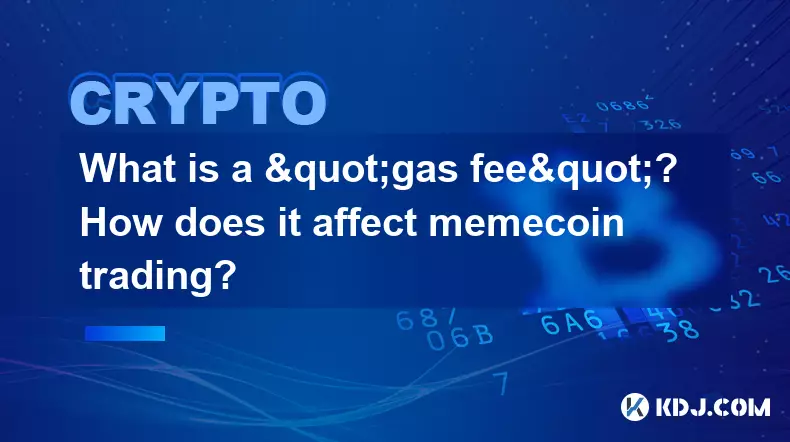
Understanding Gas Fees in Blockchain Transactions
1. A gas fee is the cost required to successfully conduct a transaction or execute a smart contract on a blockchain network, particularly Ethereum. This fee compensates miners or validators for the computational energy needed to process and validate transactions. Each operation on the blockchain consumes a certain amount of gas, measured in units, which are then multiplied by a price denominated in the network’s native cryptocurrency—such as ETH on Ethereum.
2. The total gas fee is calculated based on two components: the base fee, which is determined by network congestion, and the priority fee (or tip), which users can increase to incentivize faster processing. During peak usage times, such as when new memecoins launch or during speculative trading surges, demand for block space increases dramatically, pushing gas prices upward.
3. Different blockchain platforms have varying mechanisms for handling gas fees. For example, Ethereum uses a dynamic pricing model post-EIP-1559, while networks like Binance Smart Chain or Solana offer lower and more predictable transaction costs. These differences influence where memecoins are launched and traded, with many projects opting for cheaper alternatives to attract retail investors sensitive to fees.
The Impact of High Gas Fees on Memecoin Traders
1. Elevated gas fees directly reduce profit margins for traders, especially those engaging in short-term speculation or frequent trades. If the cost of entering and exiting a position exceeds potential gains, small-cap memecoin trading becomes economically unviable for many participants. This disproportionately affects retail investors who lack the capital buffer to absorb high transaction overheads.
High volatility combined with unpredictable gas costs introduces significant risk into memecoin strategies, making timing and network selection critical factors in execution.2. Whales and institutional players often exploit periods of high network congestion by placing large orders ahead of smaller traders. Due to their ability to pay higher tips, their transactions are prioritized, enabling them to front-run price movements triggered by memecoin hype cycles. This creates an uneven playing field where average users face delayed confirmations or failed transactions despite paying standard fees.
3. Sudden spikes in gas fees can trigger cascading sell-offs among leveraged positions if users cannot afford to close trades in time. On decentralized exchanges (DEXs) that require multiple steps—such as approving token spending before swapping—each action incurs a separate gas charge, multiplying exposure to fee volatility.
Strategies to Mitigate Gas Fee Exposure
1. Traders monitor real-time gas tracking tools like Etherscan’s Gas Tracker or Blocknative’s Gas Platform to time their transactions during low-congestion windows. Executing trades during off-peak hours—often late at night UTC—can result in substantially lower fees without sacrificing execution reliability.
2. Layer 2 solutions such as Arbitrum, Optimism, and Base offer reduced gas costs by batching transactions off-chain before settling on Ethereum. Many newer memecoins are deployed across these ecosystems to provide faster and cheaper trading experiences while maintaining security through Ethereum’s underlying consensus.
3. Some traders shift activity entirely to alternative blockchains known for low fees and high throughput, including Solana, Polygon, or Avalanche. While these networks support thriving memecoin communities, they come with trade-offs related to centralization risks and ecosystem maturity compared to Ethereum.
Using wallet settings to manually adjust gas limits and max fee caps allows experienced users to optimize spending, though improper configurations may lead to dropped or stuck transactions.Common Questions About Gas Fees and Memecoin Trading
What causes gas fees to spike during memecoin launches?Sudden interest in newly launched memecoins generates thousands of simultaneous buy orders, overwhelming network capacity. Miners prioritize transactions with higher tips, forcing users to bid up fees to get included in blocks quickly.
Can I trade memecoins without paying high gas fees?Yes, by choosing blockchains with lower congestion and native fee structures, such as Solana or BSC. Additionally, using Layer 2 networks linked to Ethereum enables cheaper swaps while retaining access to major DEXs like Uniswap.
Why do some memecoins have higher transaction costs than others?The cost isn't tied to the memecoin itself but to the blockchain it operates on and the complexity of its smart contract interactions. Coins requiring multiple approvals or interacting with staking protocols will incur higher cumulative fees.
Is it possible to cancel a memecoin transaction stuck due to low gas?Users can replace a pending transaction with one offering a higher gas fee using the same nonce. Wallets like MetaMask allow this via 'speed up' or 'cancel' functions, effectively overriding the original request with a new, better-compensated one.
Disclaimer:info@kdj.com
The information provided is not trading advice. kdj.com does not assume any responsibility for any investments made based on the information provided in this article. Cryptocurrencies are highly volatile and it is highly recommended that you invest with caution after thorough research!
If you believe that the content used on this website infringes your copyright, please contact us immediately (info@kdj.com) and we will delete it promptly.
- BlockchainFX: The Crypto Presale Primed for a 2025 ROI Explosion
- 2025-09-27 18:25:19
- ETH Price Check: Smart Money Stays Cool Amidst ATH Rollercoaster
- 2025-09-27 18:25:19
- Aster Price, MrBeast, and DEX Volumes: What's the Buzz?
- 2025-09-27 18:45:11
- Shiba Inu, Meme Coins, and MAGACOIN FINANCE: What's Next?
- 2025-09-27 18:45:11
- Aster DEX: Navigating DeFi's Future with Price Predictions and Key Insights
- 2025-09-27 18:50:01
- Virtuals Protocol's New Genesis: A Deep Dive into the Launch and $VIRTUAL's Potential
- 2025-09-27 18:50:01
Related knowledge

What is the relationship between "Shiba Inu" and "Dogecoin"?
Sep 19,2025 at 08:36pm
Origins and Inspiration Behind Shiba Inu and Dogecoin1. Dogecoin was created in 2013 by software engineers Billy Markus and Jackson Palmer as a lighth...
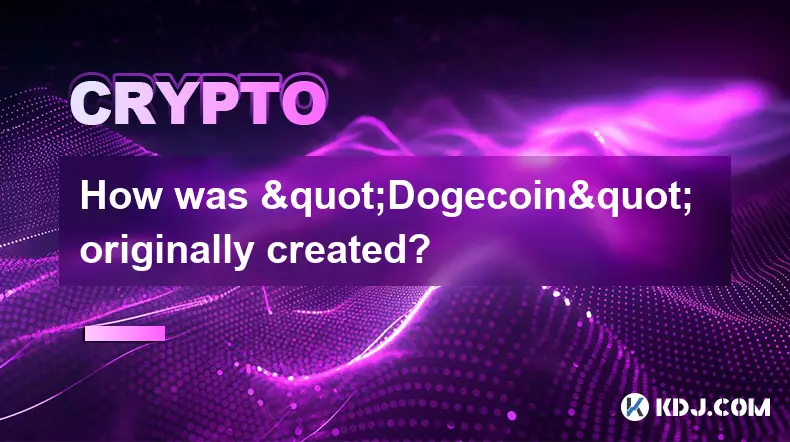
How was "Bitcoincoin" originally created?
Sep 17,2025 at 07:18pm
Origins of Dogecoin in the Cryptocurrency Landscape1. Dogecoin was introduced to the digital currency world in December 2013 by software engineers Bil...
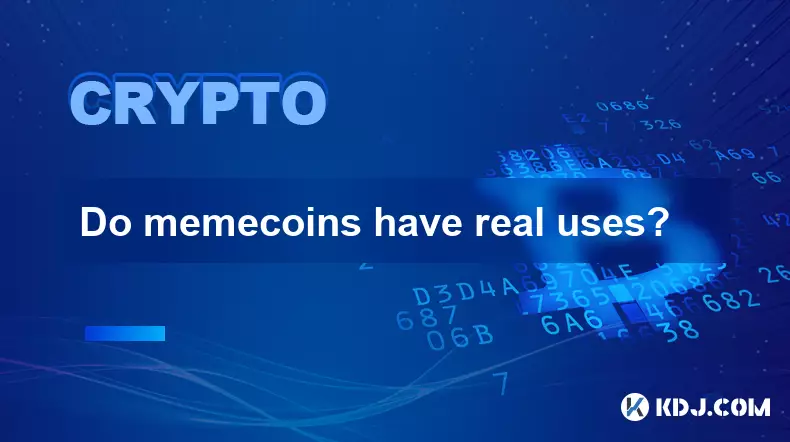
Do memecoins have real uses?
Sep 19,2025 at 03:54am
Understanding the Role of Memecoins in the Crypto Ecosystem1. Memecoins originated as internet joke currencies, often inspired by viral memes or pop c...
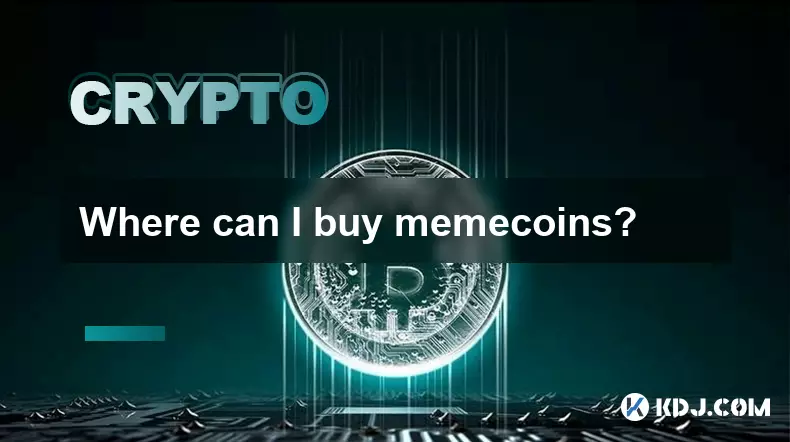
Where can I buy memecoins?
Sep 18,2025 at 02:18pm
Popular Platforms for Acquiring Memecoins1. Centralized exchanges like Binance, OKX, and Bybit have become primary destinations for traders seeking ne...
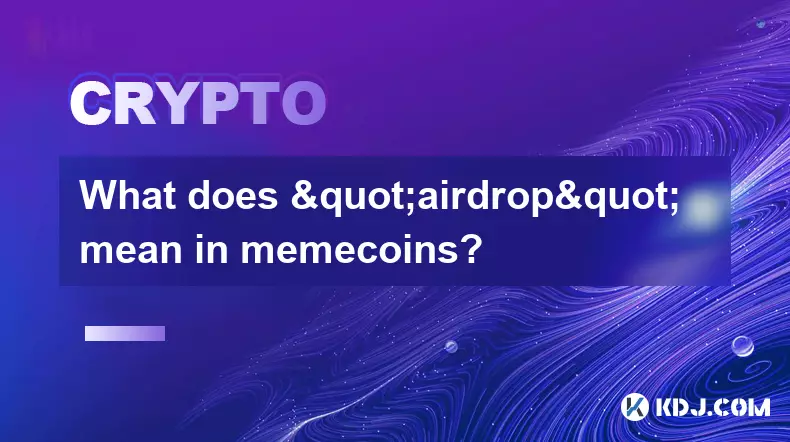
What does "airdrop" mean in memecoins?
Sep 21,2025 at 06:19pm
Understanding Airdrops in the Memecoin Ecosystem1. An airdrop in the context of memecoins refers to the distribution of free tokens to wallet addresse...

What primarily supports the value of a memecoin?
Sep 17,2025 at 10:19pm
Community Influence and Social Momentum1. The primary driver behind the value of a memecoin is its community engagement. A strong, active, and passion...

What is the relationship between "Shiba Inu" and "Dogecoin"?
Sep 19,2025 at 08:36pm
Origins and Inspiration Behind Shiba Inu and Dogecoin1. Dogecoin was created in 2013 by software engineers Billy Markus and Jackson Palmer as a lighth...

How was "Bitcoincoin" originally created?
Sep 17,2025 at 07:18pm
Origins of Dogecoin in the Cryptocurrency Landscape1. Dogecoin was introduced to the digital currency world in December 2013 by software engineers Bil...

Do memecoins have real uses?
Sep 19,2025 at 03:54am
Understanding the Role of Memecoins in the Crypto Ecosystem1. Memecoins originated as internet joke currencies, often inspired by viral memes or pop c...

Where can I buy memecoins?
Sep 18,2025 at 02:18pm
Popular Platforms for Acquiring Memecoins1. Centralized exchanges like Binance, OKX, and Bybit have become primary destinations for traders seeking ne...

What does "airdrop" mean in memecoins?
Sep 21,2025 at 06:19pm
Understanding Airdrops in the Memecoin Ecosystem1. An airdrop in the context of memecoins refers to the distribution of free tokens to wallet addresse...

What primarily supports the value of a memecoin?
Sep 17,2025 at 10:19pm
Community Influence and Social Momentum1. The primary driver behind the value of a memecoin is its community engagement. A strong, active, and passion...
See all articles









































































